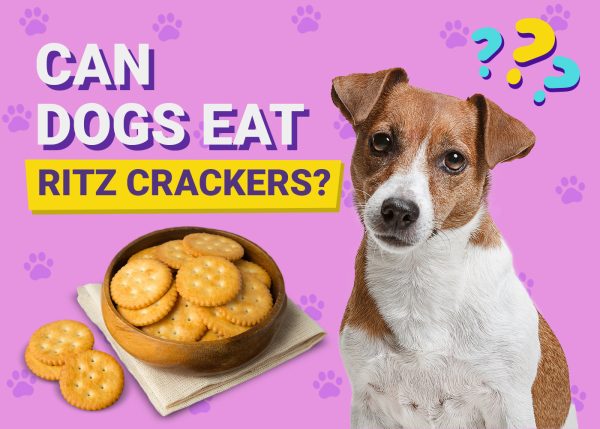Golden Retrievers are often considered the perfect companions. Friendly, intelligent, and loyal, this breed of dog can make the perfect addition to almost any family.
While the Golden Retriever has many positive personality traits, evaluation of potential health risks is also important when considering this dog breed. The following article will discuss pigmentary uveitis, an eye problem affecting Golden Retrievers.
Signs, causes, and care of affected dogs will be discussed, to better illuminate how this condition may affect the vision of your furry family member.

What is Pigmentary Uveitis?
Pigmentary uveitis (PU) is an inherited, inflammatory condition affecting the eyes of Golden Retrievers that frequently leads to ocular pain and vision loss. The condition was first described in the veterinary literature in 1996 and has since become widespread in Golden Retrievers in both the United States and Canada. In the US, the current prevalence of this condition in Golden Retrievers greater than 8 years of age is 23.9%1.
PU has been noted in Golden Retrievers from 4.5–14.5 years of age, however, the average age of onset is approximately 8.5 years, with both males and females of this breed appearing to be equally affected2. PU is most often present in both eyes of an affected canine; however, unilateral disease affecting one eye is also possible.
While general uveitis in canines may have a multitude of causes including infectious disease, cancer, or other systemic illness, PU specifically is not associated with any other ocular or systemic conditions.

What Are the Signs of Pigmentary Uveitis?
PU may present with a wide range of signs, and signs of the condition are often subtle early in the course of the disease. The hallmark of PU is radial pigment deposition on the lens of the eye.
- Red or irritated conjunctiva
- Squinting
- Epiphora (excessive tearing of the eyes)
- Increased iris pigmentation, or a darkened appearance of the iris
- Light sensitivity
- A hazy, or cloudy appearance of the eye
- Visual deficits
The above-noted signs of PU may be observed by owners at home. If any of these signs are noted, prompt evaluation by a veterinarian is warranted.
Additional signs of PU that may be appreciated by a veterinarian or veterinary ophthalmologist include cataracts (cloudiness affecting the lens of the eye), posterior synechiae (an abnormal attachment of the iris to the lens), or fibrinous material within the anterior chamber, or front of the eye.
Glaucoma
Glaucoma is a condition that may also be noted by your veterinarian; this often occurs as a complication of PU in affected Golden Retrievers. Glaucoma is a painful disease that can rapidly lead to blindness of affected canines. Vision loss secondary to glaucoma has unfortunately been reported in up to 46% of dogs diagnosed with PU3.
On average, dogs will develop glaucoma within 4.8 to 9.4 months after receiving a PU diagnosis.
Uveal Cysts
Lastly, your veterinarian may also observe uveal cysts during an ophthalmic examination. Uveal cysts may be attached to the edge of the pupil or free-floating in the anterior chamber. These cysts may be single or multiple, and appear as clear to slightly-pigmented circular or oval-shaped structures.
Uveal cysts are not considered a sign of PU; however, they are considered a significant risk factor for PU development in Golden Retrievers.

What Are the Causes of Pigmentary Uveitis?
The specific genetic mutations and underlying disease processes that lead to this condition are not currently well understood. Uveal cysts are typically detected on microscopic evaluation of eyes affected by PU, and are considered to be a risk factor for the development of the condition, as noted above.
However, the exact role that uveal cysts play—with regard to the pigment dispersion and inflammation characteristic of this condition—is uncertain.
Current evidence demonstrates that PU in Golden Retrievers is an inherited condition. While a definitive mode of inheritance is uncertain at this time, PU is thought to be an autosomal dominant condition—meaning an abnormal gene from one parent can cause disease in their offspring.
However, PU is also thought to have incomplete penetrance—meaning that offspring with an abnormal gene may or may not show clinical signs of disease.
The relatively late onset of PU and uncertain mode of inheritance make this condition challenging to control. By the time a diagnosis is made, an affected dog may have been bred multiple times, or have produced multiple generations of potentially-affected dogs.
To help reduce the incidence of disease, the Golden Retriever Club of America recommends that dogs should be evaluated by a veterinary ophthalmologist before breeding, as well as on a yearly basis throughout their life.

How Do I Care for a Golden Retriever with Pigmentary Uveitis?
Caring for a dog affected by PU will involve close collaboration with a veterinary ophthalmologist. Regular examinations, as well as frequent adjustments to medications, can be expected to best manage dogs with this condition.
Between appointments, your veterinarian may ask you to monitor for any changes or progression of your dog’s sign at home—even subtle changes to the appearance of your pet’s eyes, or changes in their normal behaviors may be significant.
As a complication of PU, glaucoma can be a very painful condition; however, it may not always be obvious when our canine companions are experiencing pain. The following behavior changes may indicate that your pet is in pain, for which prompt reevaluation by a veterinarian is recommended:
- Disinterest in play or social interactions
- New aggression towards other pets in the household
- Seeming “face shy”, or avoidance of being petted or groomed
- Decreased appetite
- Changes to normal sleep patterns
Is your dog presenting any of these signs? Talk with one of our experts here:
If you need to speak with a vet but can't get to one, head over to PangoVet. It's our online service where you can talk to a vet online and get the advice you need for your pet — all at an affordable price!

In addition to monitoring for behavioral changes in dogs undergoing treatment for PU, changes in visual acuity are also important to note and should prompt a veterinary visit, as they may indicate the progression of glaucoma. Similar to changes in behavior, signs of vision loss in canines may range from subtle to glaringly obvious.
Confusion, fearfulness, “clingy” behavior, inability to locate toys or food bowls, and bumping into walls or furniture may all indicate some degree of blindness or vision loss in dogs.

Frequently Asked Questions (FAQs)
How Can I Prevent My Dog From Developing Pigmentary Uveitis?
Prevention of PU in Golden Retrievers relies on obtaining a timely, accurate diagnosis and refraining from breeding affected animals. Once a diagnosis of PU has been made, consistent treatment and monitoring may slow the progression of the disease. However, there is currently no cure for this condition.
How is Pigmentary Uveitis Treated?
Treatment for PU focuses on controlling intraocular inflammation and preventing the progression of secondary glaucoma if present. Both topical and oral medications are often used, including both corticosteroids and non-steroidal anti-inflammatory (NSAID) drugs.
Topical anti-glaucoma medications may be used later in the course of disease, however, dogs with end-stage PU and uncontrollable glaucoma may require enucleation (surgical removal of the eyes).
What is the Prognosis for Pigmentary Uveitis?
As PU is a condition only affecting the eyes, a diagnosis will not directly impact the lifespan of an affected canine. The prognosis for vision in dogs with PU is guarded, however, as glaucoma and subsequent vision loss are commonly noted as complications of this condition.
Fibrinous material within the front of the eye and posterior synechiae are considered negative prognostic indicators for the development of glaucoma.


Conclusion
In summary, PU is a challenging condition that may ultimately lead to pain and vision loss in Golden Retrievers. A timely diagnosis of this condition is essential to both initiate supportive therapy in affected animals and prevent the breeding of those positive for the disease.
This may be best accomplished by annual examinations by a board-certified veterinary ophthalmologist. Additional research on this condition in Golden Retrievers is ongoing, and will hopefully lead to earlier detection and improved outcomes for this loyal, loving breed.
Featured Image Credit: Rala3030, Shutterstock


















